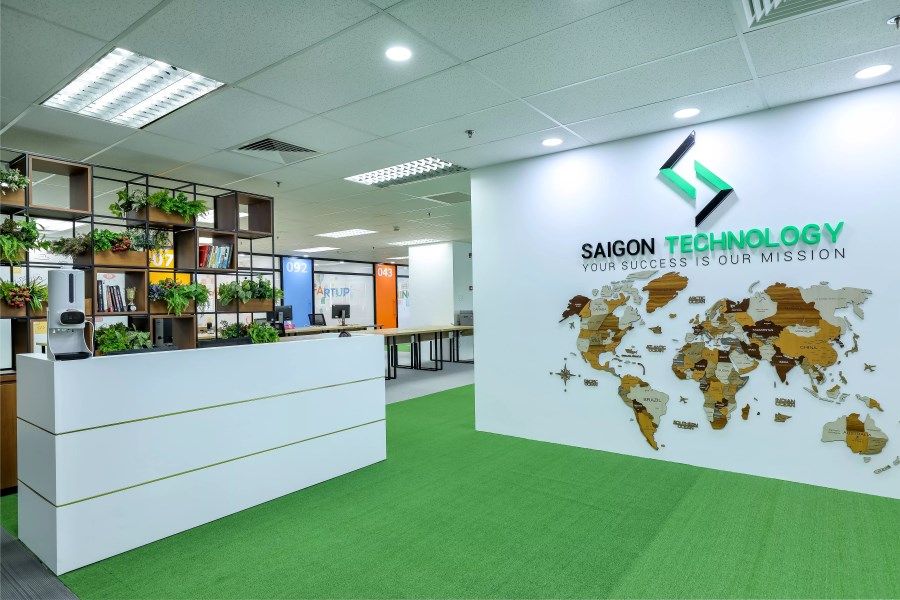In Australia, digital transformation is an essential practice, not just a buzzword. It’s reshaping how businesses operate by integrating digital technology into all areas. Technology is key to shaping strategies as the business world changes. Customers want things made for them, so businesses have to go digital. It’s not an option; it’s a must. This change is driving business innovation and speeding up technology adoption in Australia.
Digital Transformation Trends in Australia
Taking Australian businesses online is important for growth in the global market. By helping set the rules for digital tech, we can make international markets more accessible. Agreeing with countries that want to grow digitally will help this process. These are some of the current trends in digital transformation.
Embracing Digital Technologies in Australia
Digital transformation is changing how businesses interact with customers and run their operations. When companies accept this change, they can connect better with customers. This can lead to making more money and growing your company.
Technology is the driving force behind this change. It reshapes business processes, customer experiences, and business models. If businesses try new things, they can make more money, work better, and get closer to their customers. Using the latest tools and tech can help them improve these processes and meet customers’ needs.
New technology, such as IoT, robotics, and 3D printing, is changing how businesses work. These changes are part of Industry 4.0, the latest stage of the Industrial Revolution.
Unleashing Digital Transformation in Australia
Digital transformation is a big move for businesses to keep up with new markets. Leaders find that going digital can improve their workflow and meet customer needs.
Today’s customers are more selective. They want a smooth, personalized experience across all channels. Companies like Amazon and Netflix have raised customer expectations. To meet these high standards, businesses need to go the extra mile.
Digital Transformation Landscape in Australia
Australia’s tech sector is set to grow and impact the economy. This growth is driven by businesses in various sectors adopting technology. We expect to see digital transformation in Australia’s leading industries in the coming years.
Consumers are now familiar with the Internet of Things (IoT). The industrial sector is making considerable progress. AI is a driving force in important industries. These include aerospace, defense, security, mining, energy, resources, and farming. Agriculture and mining, vital to Australia’s economy, are also joining this digital revolution. The manufacturing sector is expected to bounce back, driven by innovative automation technologies.
Key Drivers of Digital Transformation in Australia
Let’s take a look at some of the key drivers:
- Technological Progress: Fast-paced tech advancements are driving digital transformation in Australia. New technologies like AI, cloud computing, big data, and IoT help businesses improve.
- Consumer Expectations: Consumer behavior and expectations have seen a shift. Today’s consumers are more informed, connected, and demanding. They seek personalized experiences that are consistent across various channels. Changes in what consumers want are pushing businesses to go digital to meet these new needs.
- Competitive Landscape: The business environment is very competitive. Companies are feeling the pressure to innovate and differentiate themselves from their competitors. Digital transformation offers businesses an opportunity to gain a competitive edge.
Benefits of Digital Transformation for Australian Businesses
Digital transformation brings many tangible benefits to Australian businesses. Using this approach, companies can be more flexible and make more money. They can also improve how customers see them, which is good for their brand image and awareness. Plus, going digital can lower costs by making everyday tasks more efficient.
It is all about maximizing value and rethinking how to do things. Experts agree it’s a continuous process of minor improvements. Digital transformation is not a once-off big change.
Here are some key outcomes:
- Operational Efficiency: enhances efficiency by simplifying processes and automating routine tasks. It reduces errors, accelerates time-to-market, and saves money by eliminating unnecessary manual systems.
- Improved Customer Experiences: Leveraging digital technologies allows businesses to provide better customer experiences.
- Boosting Digital Capability: can enhance the digital capability of small businesses. It can remove outdated regulatory barriers and drive technology uptake across the economy.
- Informed Decision-Making: Real-time data and analytics lets companies make intelligent decisions. It helps them find ways to save money, improve their processes, and earn more revenue.
Challenges and Barriers
Embarking on the journey of digital transformation presents several challenges for businesses. Integrating new digital technology with old systems can cause problems and difficulties.
- Old systems and infrastructure: Adding new digital tech can lead to compatibility problems and can mess up operations.
- Cultural Resistance and Change Management: Many staff and company cultures impact work methods. This can resist change, hindering the adoption and acceptance of digital strategies.
- Data Privacy and Security Concerns: Protecting sensitive information is paramount. Especially given the increase in cybersecurity threats and privacy breaches. Advocating for robust cybersecurity measures, encryption protocols, and compliance frameworks is crucial.
- Skills Gap and Talent Shortage: Investing in hiring and keeping talent with the right digital skills is vital. Training and development programs for employees are key. They help improve existing talent, close the skills gap, and create a culture of innovation.
- Scalability and Flexibility: Digital initiatives must be scalable and flexible. This ensures they can adapt to evolving market dynamics and maintain operational agility.
It’s essential to have a clear digital transformation strategy. This strategy needs to align with business goals and a long-term vision. Using agile methods allows for flexibility, testing, and quick changes in digital projects.
Working with a leading software development company can help businesses overcome these challenges. Thus, they assist in implementing strategies successfully.
Case Studies: Success Stories in Australia
Let’s take a look at some case studies that prove the success of digital transformation in Australia.
Pioneering Digital Transformation: The UBank Story
UBank is an online bank in Australia. It shows how old companies can fit into the digital age. Even though the National Australia Bank (NAB) owns UBank, it works independently. It has its own goals, identity, culture, and ways of doing things.
Often, established companies are wary of creating “challenger brands.” They worry about losing their existing customers and making less profit. But UBank shows that NAB understands the importance of adapting to new market trends. UBank noticed that:
- Young, tech-savvy customers have distinct financial needs and service expectations.
- Being the first to act among four similar-sized central banks, each with about a 25% market share. It can draw in more new customers than it might lose from its current customers.
- Offering simpler products at a lower cost (for example, no branches or big sales/marketing teams) creates a unique value for customers. This approach appeals to specific market segments.
The lesson from NAB’s UBank strategy is simple. Look for tech-savvy customers who aren’t getting what they need. Then, make a plan that meets their unique needs. Use tech to match their preferred business way and cut costs. Success is possible without affecting your traditional business.
Leading the Charge: Domino’s Digital Transformation Journey in Australia
Domino’s in Australia share price has jumped over 500% in less than three years. Now, they’re worth more than $5 billion. That’s pretty amazing for a pizza company in a challenging market.
They love using technology to improve things. Their goal is to make customers happy and boost sales. But, they also think technology is important on its own. This is especially true because many of their customers are young people.
So, what have they done? They’ve made it possible for customers to order from different devices. Customers can even track their pizza from the kitchen to their doorstep. They’ve also started using robots, called the Domino’s Robotic Unit, to deliver pizzas. Now, they receive more online orders.
The company encourages customer participation and crowdsourcing to create new pizza recipes. It has garnered over 1 million likes on Facebook. Domino’s positions itself as a technology leader and pioneer. Yet, it reflects the positive outcomes of this strategic stance in its results.
Learn more: Our case study in Australia
Future Trends and Predictions
New technologies are molding the future of digital transformation. New tech like AI, IoT, and blockchain is changing things fast. They’re shaking up different industries and changing the way businesses work.
- Artificial Intelligence (AI): AI is no longer confined to the realms of science fiction. It’s revolutionizing industries, automating routine tasks, and enhancing human capabilities. AI can improve the productivity of knowledge-based tasks.
- Internet of Things (IoT): IoT has become a consumer staple. The industrial sector is making significant progress in digital transformation. IoT devices enable seamless data storage and access, fostering innovation and creativity.
- Blockchain: Blockchain technology provides a safe and clear method for logging transactions. This is particularly useful in finance and supply chain management.
Technology like AI and IoT makes work more accessible, safer, and diverse. But, these changes can take time to occur. Thus, businesses need a digital plan that matches their goals and vision for the future. This helps ensure they use the tech well.
Conclusion
Australia’s economy is set to reach $315 billion in the next ten years. This growth is due to the country’s focus on using digital tech in business.
Emerging technologies are poised to impact Australia. Automation, cloud computing, and the Internet of Things (IoT), IoT hold tremendous potential. Especially in agriculture, healthcare, and transportation. It enables companies to gather data from their devices. This can enhance their operations and products. Thus, giving them a competitive edge on a global scale.
In conclusion, digital transformation opens up opportunities for Australian organizations. It’s like a door to success, making money, and being a global player. It shows Australia’s bright future in the digital age.
With its presence in Australia, Saigon Technology is proud to accompany businesses on their digital transformation journey. Boasting over 12 years of experience and more than 800 successful projects across various domains, you can trust Saigon Technology’s Software Development Services to help you overcome the challenges of digital transformation. Contact us today!







